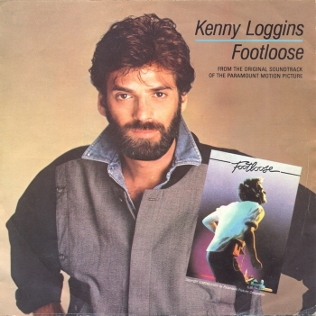 1987 was a pivotal year for hip-hop and for women in music. While the genre had been steadily growing since the late 1970s, mainstream audiences were just beginning to recognize its cultural power and musical innovation. Into this moment came Salt-N-Pepa, a groundbreaking female rap trio from Queens, New York, with their single “Push It.” The song would not only cement their place in hip-hop history but also revolutionize how female MCs were perceived in a male-dominated industry. With its infectious synth riff, hypnotic beat, and bold, confident lyrics, “Push It” became an anthem of empowerment, sexuality, and unapologetic self-expression. Its influence extended far beyond the charts, marking a turning point in popular culture and the representation of women in hip-hop.
1987 was a pivotal year for hip-hop and for women in music. While the genre had been steadily growing since the late 1970s, mainstream audiences were just beginning to recognize its cultural power and musical innovation. Into this moment came Salt-N-Pepa, a groundbreaking female rap trio from Queens, New York, with their single “Push It.” The song would not only cement their place in hip-hop history but also revolutionize how female MCs were perceived in a male-dominated industry. With its infectious synth riff, hypnotic beat, and bold, confident lyrics, “Push It” became an anthem of empowerment, sexuality, and unapologetic self-expression. Its influence extended far beyond the charts, marking a turning point in popular culture and the representation of women in hip-hop.
At its core, “Push It” is both a party track and a declaration of independence. It celebrates women’s autonomy and sexual confidence while maintaining an accessibility that allowed it to cross over into mainstream radio and MTV rotation. The song’s appeal was immediate and enduring: fans couldn’t resist the catchy hook, the commanding vocal delivery, or the playful energy of Salt-N-Pepa themselves. More than thirty years later, it remains a touchstone in the history of hip-hop, demonstrating that female voices could be just as assertive, innovative, and influential as their male counterparts.
The release of “Push It” was more than just a commercial triumph; it was a cultural statement. It challenged norms, defied stereotypes, and redefined what female rappers could accomplish in a genre that often marginalized them. Salt-N-Pepa weren’t merely performers—they were trailblazers, and this song became their signature anthem.
Crafting a Hip-Hop Classic
Originally recorded for their 1986 album Hot, Cool & Vicious, “Push It” became a hit after its re-release as a single in 1987. The track is anchored by a pulsating, electro-inspired beat produced by Hurby “Luv Bug” Azor, who helped craft the signature sound that gave Salt-N-Pepa their distinctive edge. The iconic synth riff, instantly recognizable to anyone familiar with 1980s music, is both minimalist and hypnotic, giving the song its infectious energy and making it irresistible on the dance floor.
Vocally, the song is a masterclass in rhythm and personality. Cheryl “Salt” James and Sandra “Pepa” Denton trade verses with precision and charisma, their delivery confident, playful, and flirtatious. The lyrics celebrate sexual agency and assertiveness, but they do so with humor and flair, allowing the song to retain a sense of fun even as it challenges social conventions. Deidra “DJ Spinderella” Roper’s scratching and turntable work complete the sonic package, adding layers of texture that reinforce the track’s hip-hop credibility.
Unlike many early hip-hop tracks that focused primarily on boasting or street narratives, “Push It” was deliberately designed to appeal to a wider audience. Its hook—“Ah, push it”—is deceptively simple, yet it’s a perfect example of how repetition and rhythm can create a lasting impact. It’s the kind of line that gets stuck in your head, a chant that invites participation, whether at a party, in a car, or on a playground.
Lyrics and Themes
The genius of “Push It” lies in its lyrical blend of assertiveness and playful sensuality. Salt-N-Pepa’s verses are bold without being aggressive, empowering without being preachy. The song celebrates female desire and confidence at a time when such expressions were often censored or dismissed in mainstream media. Lines like:
“Salt and Pepa’s here, and we’re in effect / Want you to push it, babe”
…demonstrate a confident command of space and attention, asserting that women could be in control of both the music and the message.
The repeated refrain, simple as it may seem, serves multiple purposes: it’s an invitation, a declaration, and a form of audience engagement. “Push it” becomes both a metaphor for energy, movement, and sexual assertiveness, and a literal call to action on the dance floor. This duality is part of what has kept the song relevant for decades; it works as a fun party anthem while also carrying a subtle but powerful message about autonomy and self-expression.
The lyrics’ playfulness and clever wordplay also exemplify the broader artistry of early hip-hop. Salt-N-Pepa’s approach was witty, rhythmic, and precise, proving that female rappers could match—and exceed—the lyrical skill of their male contemporaries. They weren’t just riding beats; they were shaping the genre, expanding its possibilities, and creating a space where women could thrive.
The Visual Revolution
“Push It” also made waves through its music video, which became a cultural touchstone on MTV and other video outlets. Directed with a keen eye for style and performance, the video showcased Salt-N-Pepa’s charisma, choreography, and fashion sense. Their confidence on screen was as crucial as their performance on the record itself, reinforcing the song’s message of female empowerment and self-assuredness.
The visuals, featuring bold colors, dynamic camera work, and playful dance sequences, helped bridge the gap between hip-hop culture and mainstream audiences. For many viewers, the video was their first exposure to a hip-hop song led entirely by women, and it left a lasting impression. The song and its video demonstrated that female artists could dominate the charts, the airwaves, and the cultural conversation simultaneously.
Cultural Impact
“Push It” became more than just a hit single—it became a cultural phenomenon. It helped pave the way for future generations of female rappers, from Queen Latifah to Missy Elliott, proving that women could command attention and respect in hip-hop without compromising their individuality or style. Its crossover success also challenged industry norms, showing that a female-led hip-hop song could thrive commercially and critically.
The song’s enduring popularity is evident in its continued presence in media and popular culture. It has been featured in films, commercials, and television shows, and has been sampled and covered by numerous artists across genres. It also remains a staple at parties, clubs, and sporting events, a testament to its irresistible energy and universal appeal.
“Push It” is often credited with helping to normalize the presence of women in hip-hop, a space that was, and often still is, dominated by male voices. Salt-N-Pepa’s visibility, confidence, and skill challenged stereotypes and expanded the possibilities for what female rappers could achieve. The song is not just a party anthem; it’s a cultural milestone.
Musical Innovation
The production of “Push It” exemplifies the innovative spirit of 1980s hip-hop. Hurby Azor’s use of electronic beats, synthesized riffs, and dynamic sampling created a sound that was modern, danceable, and undeniably catchy. The song’s minimalist approach allowed Salt-N-Pepa’s personalities and vocal performances to shine while maintaining a rhythmic drive that kept audiences engaged.
The track’s structure is deceptively simple: it’s essentially a looped beat with alternating verses, choruses, and hooks, yet this simplicity is precisely what gives it its power. By focusing on repetition, rhythm, and vocal interplay, the song becomes hypnotic, inviting listeners to move, chant, and engage. It’s a blueprint for party-oriented hip-hop that many artists would emulate in the years to come.
The combination of assertive vocals, catchy hooks, and innovative production techniques helped make “Push It” timeless. While it is firmly rooted in the sounds of the 1980s, its influence can be traced through decades of pop, hip-hop, and electronic music.
Legacy and Enduring Influence
More than thirty years after its release, “Push It” remains a cultural touchstone. It’s frequently cited as one of the greatest hip-hop songs of all time, both for its musical innovation and its role in empowering female artists. Salt-N-Pepa’s pioneering work helped open doors for countless women in music, establishing a legacy of confidence, skill, and creativity that continues to inspire.
The song’s influence is evident in both popular culture and the music industry. Its blend of humor, sensuality, and empowerment has been echoed in the work of contemporary artists, while its production techniques continue to inspire modern producers. Its presence in films, commercials, and television shows reinforces its status as an enduring anthem of fun, empowerment, and timeless appeal.
“Push It” also remains a vital part of Salt-N-Pepa’s live performances, with audiences chanting along and dancing to the iconic hook decades after its initial release. The song’s energy, charisma, and attitude have not diminished, proving that truly great music transcends time.
Why “Push It” Matters
The importance of “Push It” lies not only in its infectious groove and memorable hook but in its cultural resonance. It challenged the norms of its era, gave voice to women in hip-hop, and showcased the power of personality and creativity in music. Salt-N-Pepa proved that female artists could be bold, funny, sexy, and serious all at once, without compromising their artistry or credibility.
The song’s lasting appeal comes from its ability to combine entertainment with empowerment. It’s fun, provocative, and commanding, yet beneath the surface, it carries a message of autonomy and self-confidence. It’s the perfect example of how a song can be both lighthearted and groundbreaking, a danceable anthem and a cultural statement.
Conclusion
“Push It” by Salt-N-Pepa is more than a hit single from 1987; it’s a cultural milestone, a musical innovation, and a timeless anthem of empowerment. Its catchy hook, innovative production, and bold lyrical content have ensured its place in the pantheon of classic hip-hop tracks. It remains a celebration of female confidence, independence, and artistry, proving that women could dominate a genre that had long been dominated by men.
Over three decades later, the song continues to resonate, inspiring new generations of artists and fans alike. It is a reminder of a moment when music, culture, and empowerment intersected perfectly, producing a track that is as fun as it is influential. “Push It” endures not simply because it is a great song, but because it embodies the spirit of confidence, creativity, and unapologetic self-expression that Salt-N-Pepa brought to the world.
Every time the iconic synth riff starts, every time the chorus calls out “Push it,” listeners are transported back to that revolutionary moment in 1987, when a group of fearless women from Queens proved that they could command the world’s attention and leave a legacy that would last forever.
Salt-N-Pepa didn’t just make a song—they made a statement. And that statement still resonates today.


